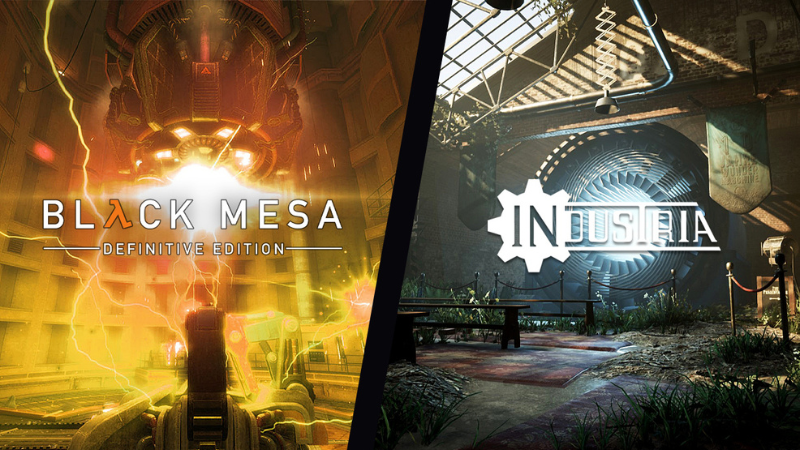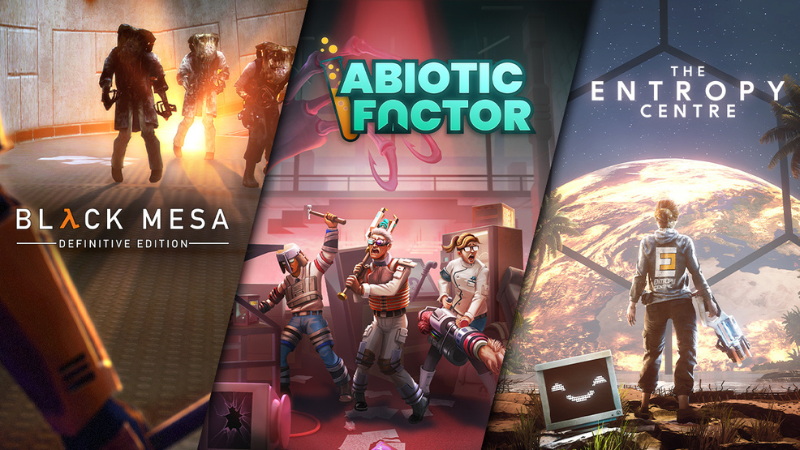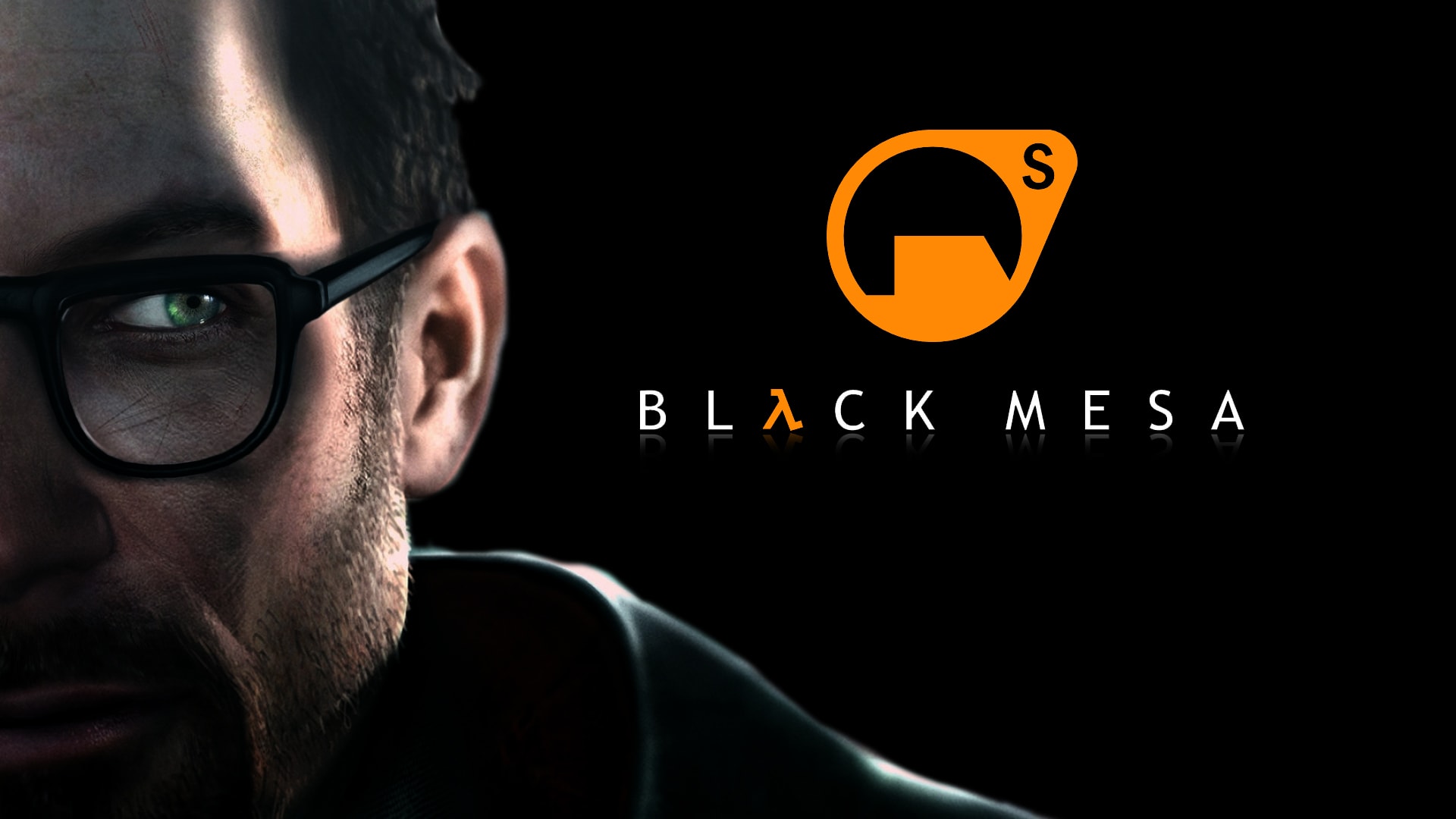Hey, I’m Spence! I have been working off and on with the team since 2005 when the project was in its very early days as a Half-Life 2 mod. I had a small amount of experience making maps for Half-Life and initially joined the team as a level designer. My earlier work is found in Black Mesa Inbound, Surface Tension, and On A Rail where I built level geometry and re-imagined a few puzzles and gameplay spaces. In more recent years I’ve worked as an artist, supporting the team for the Surface Tension Uncut and Xen updates. Now, I continue to contribute as a principal artist for experimental and upcoming projects.
Outside of Black Mesa, I’ve contributed to two other games built on the Source engine, and as an independent developer, I’ve contributed to a handful of other game-related projects and teams. If you want to know more about my work or my contributions to Black Mesa you can check out my portfolio website at .
Aside from games and digital art, some of my other biggest interests and hobbies are photography, model-building, and traveling. I love new foods, different languages, and meeting all types of people from all over the world!
Working with the team over the years has been rewarding. Everyone has an infectious enthusiasm and I’m constantly able to learn new things and grow as a developer, which is one of the best aspects.
Also, all of the feedback from players and fans is incredibly motivating! So much work on Black Mesa was borne out of genuine love for Half-Life, and it’s an honor to have contributed in some small ways.
The pure volunteer nature of the project was a help and a hindrance at some points. In the early days, we were all working in our spare time and for the fun of it. That’s not always sustainable, especially when it comes to fixing bugs, design revisions, or things that might not be as fun.
In more recent years, as an artist, it was difficult working with the Source engine while concurrently working on other projects in Unreal 4 or Unity. You become very conscious of the limitations and workflow differences between the engines and find yourself wishing for something that combines the best of all of them.
I’ve attended four different schools throughout my time working on Black Mesa – and only graduated from one of them, well after I began working on the project 😉
I never expected to go into a career doing creative things with computers, and the ways I spent my time and efforts in school reflect this.
After years of working on games and studying other things, I returned to university and graduated in 2016 with a BSc in Creative Technologies. It’s only loosely related to the work I contributed to Black Mesa, but the course did better prepare me to take on other roles and think across different disciplines as an independent developer.
It’s anyone’s guess, but most likely working on other games or content for them. If I had pursued my earlier career ambitions, then I’d probably be flying or driving some kind of vehicle – or, alternatively, building physical things instead of digital things.
I have come and gone from the team on multiple occasions – I think anyone that works on a project over the course of ~15 years will feel like giving up or quitting at some point, especially considering the volunteer nature of the team for many years.
Leaving the team to work on other projects or develop new skills has allowed me to take on new challenges and roles on each return. While I think it’s been beneficial (and necessary) from a personal perspective, I think that it’s allowed me to make better contributions to the team as well.
It’s safe to say that the art process for Xen would have been impossible if it wasn’t for these tools. The Source engine is not particularly artist-friendly as it is – before switching over to the Wallworm tools, I was using a series of batch files and scripts to compile models and materials. There were a lot of points of failure and a lot of manual effort required to create art assets – not to mention an entire scene.
While the tools don’t (and can’t) solve all of the workflow issues with Source, they do offer a much smoother “pipeline” to work with. What used to be a lengthy process of preparing and compiling assets can now be done in a few clicks, greatly accelerating things – and also reducing frustration for artists, an important consideration 🙂
Creating and compiling models is only part of the process – one of the other strengths of the tools is the ability to work directly with map geometry and create entire levels through the modeling program. In this case, we did a lot of terrain sculpting and object placement in 3dsmax, which is far easier than it would have been in Hammer editor.
We were also able to take clusters of props, merge them, and perform boolean operations to remove the parts that would be occluded by geometry or otherwise “hidden” in-game. These kinds of workflow improvements allowed us to create levels that were more detailed (and performant) than anything that we could have created with Hammer alone.
All of this allowed us to spend more time with the “fun” (or at least, more creative) parts of starting up the level, and I think that’s the most important workflow improvement.
Are all the classics (Counter-Strike, Team Fortress Classic, and Day of Defeat) still counted as “mods” these days? 🙂
I’ve played a lot of single-player mods for Half-Life…Azure Sheep, They Hunger, Point of View, Poke646 were some of my all-time favorites. I played the heck out of Natural Selection and Science and Industry, too!
Probably some type of simulation/construction/management game. I’ve always wanted to make something like Sim Tower (or more recently, Project Highrise) but in an isometric style, like The Sims. Of course, I don’t have unlimited time, money, or help, but I still work on this project from time to time as a way to improve and expand my programming knowledge. There are a lot of challenges to solve when it comes to things like pathfinding and AI, and I still have a lot to learn and many prototypes to build…
More recently, I’ve been developing some ideas for simulation games based on the industrial revolution, or exploring the lifecycle of coal over 100 or 200 years, through periods of increasing industrialization before an extensive decline. I don’t think I’m a particularly skilled designer, but it is fun to build out game ideas drawing on history or the world(s) around us.
– Yes, I accept it. Especially if there is bacon or ham on this pizza ^^


